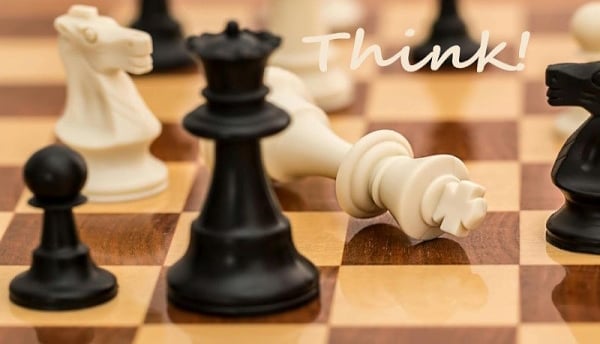Learn to Think Critically or Problem Solve
Learning to think critically and problem solve is essential for taking control of our lives. It allows us to approach situations with a rational mindset, rather than reacting emotionally. By mastering critical thinking skills, we can make informed decisions, solve problems effectively, and evaluate information objectively.
Z. Hereford


The quote by Jean De La Bruyere: "Life is a tragedy for those who feel, and a comedy for those who think," may seem a bit extreme; however, according to the premise of cognitive psychology, what you think is what you feel.
While many believe that feelings precede or are independent of thoughts, the truth is that feelings are products of thoughts.
This revelation can be both daunting and liberating.
Daunting because it makes us responsible for our attitudes and liberating because we have the power to choose our perspective, mood, and thoughts.
When we are aware that we can choose and direct our thinking, we realize that we can better control the circumstances of our lives, improve our decision-making processes, and generally live more productive lives.
This point in no way suggests that we need to downplay the many feelings and emotions we as humans enjoy; it's simply a way for us to manage and balance them with our cognitive abilities.
We are thinking critically and in a problem-solving mindset when we:
Rely on reason rather than emotion
Evaluate a broad range of viewpoints and perspectives
Maintain an open mind to alternative interpretations
Accept new evidence, explanations, and findings
Are willing to reassess information
Can put aside personal prejudices and biases
Consider all reasonable possibilities
Avoid hasty judgments
Learning to think critically or to problem-solve takes time, perseverance, and practice like any other skill. Knowing which steps to take and how to apply them helps us master the process.
Steps to Critical Thinking As It Relates To Problem Solving:
1. Identify the Problem. The first task is to determine if a problem exists. Sometimes, when you think this point through, you may conclude that there isn't a problem, just a misunderstanding. If that's the case, fine. If not, and you determine that there is indeed a problem, you need to identify precisely what it is. According to Barry Lubetkin, a New York clinical psychologist, how systematically someone weighs the pros and cons of a problem and how clearly the person can define and state it are also indications of highly developed intelligence.
2. Analyze the problem and look at it from different angles. Once you've determined the problem, analyze it by looking at it from various perspectives. Is it solvable? Is it real or perceived? Can you solve it alone, or do you need help? By looking at it from many angles, you can come up with a resolution immediately. You may also reveal a bias or narrow point of view that needs to be examined.
3. Brainstorm and come up with several possible solutions. Problems are solvable in many ways. Brainstorm a list of several possible solutions. Write down anything that comes to mind, and then go over the list and narrow it down to the best possibilities. By listing several viable options, you can obtain the best results.
4. Decide which solution best fits the situation. Go over your list of possible solutions. Different situations call for different solutions. What works in one situation may work differently in another. Take time to determine what will work best for the problem at hand. One solution usually does not fit all.
5. Take action. Implement your solution. Every problem has a solution, even if it is to accept the situation and move on. Instead of approaching problems and challenges as insurmountable obstacles, we can view them as opportunities to hone our critical thinking and problem-solving skills.
Every problem we can resolve increases self-confidence and self-worth. Thinking critically helps us handle future challenges more skillfully, broadens our life experience, and helps us gain perspective.
